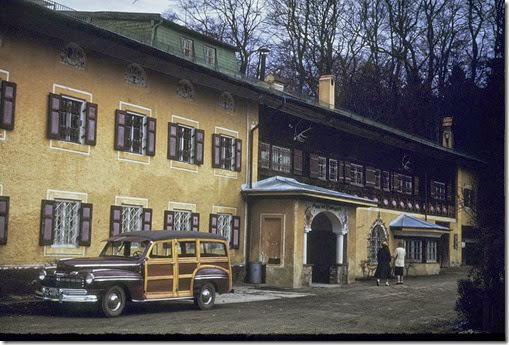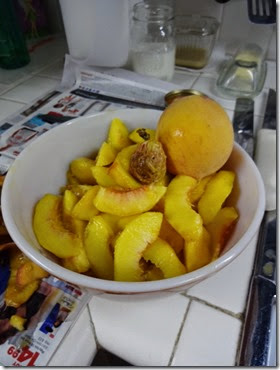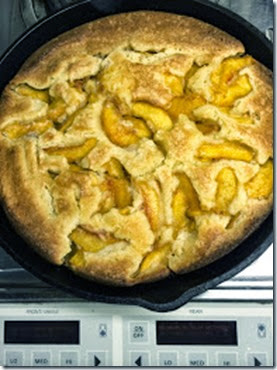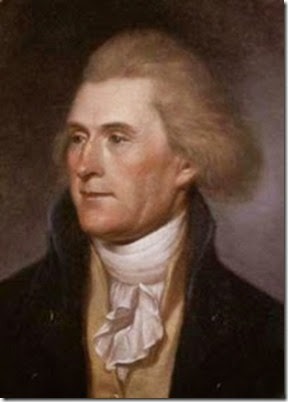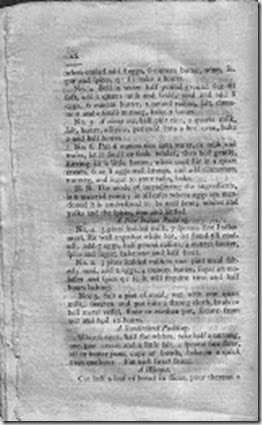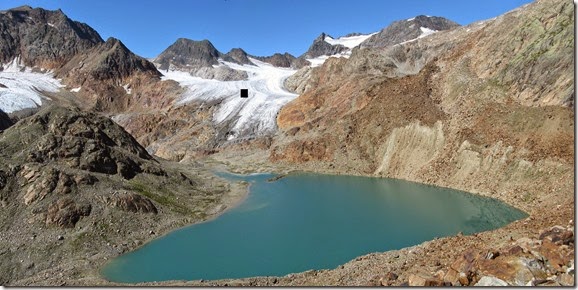
In a recent phone conversation, a friend pinned me down. “Now, why are you making this trip, what will be your takeaway? Since Joanna Leigh is only seven, what do you want or expect her to get from it?” she asked.”
A few years after my father died in 1995 and I had brought home a lot of his possessions to store, I decided to take on the project of looking deeper into his World War II event. I wasn’t sure why.
I started by pulling out the three 55- or 60- year-old scrapbooks (now they are more like 70 years old) my mother had put together beginning with dad’s enlistment after Pearl Harbor, getting his wings, his Missing in Action status, his return, and our lives living in Munich from 1948-51 where dad was assigned as part of the Allied Occupational Forces. I was in the first, second, and third grades there.
I slipped the second one out of the plastic wrapping; it covered his War experience as a P-51 Mustang pilot flying out of Italy into Bavaria ( see below). I opened it and realized the pages were terribly fragile, crumbling into sand as I turned them. There were letters, telegrams, notices of his MIA status, pieces of his parachute, Nazi money, all kinds of things, but one news article cut from an unidentified paper caught my eye. It was dated February 22, 1945, the day dad had to bail out of his damaged P-51 over the Alps.
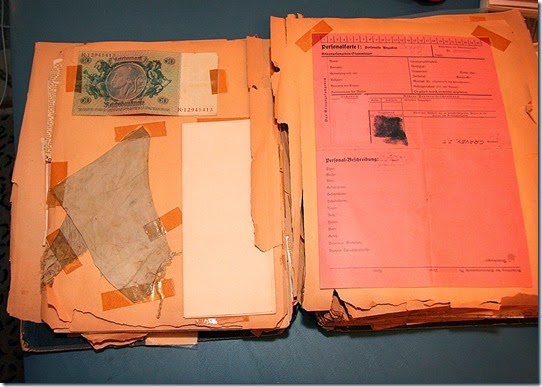
Here’s what the article said:
“9,000 Planes Pound Nazi Rail Lines Greatest Air Fleet of War Deals Kayo Blow ---- Results Good: Aerial Offensive Against Reich in Final Phase LONDON, Feb. 22 – (UP)
The greatest air fleet of the war – an estimated 9,000 bombers and fighters – dealt a knockout blow today to the entire rail transportation system of western Germany, blasting every primary and secondary rail line in that section of the Reich and paralyzing enemy communications.”
It went on to say that with the 2,000 additional air planes of the Red Army, the total would be more like 11,000 Allied planes in action over Germany that day.
“Every type of plane at the disposal of the Allied air chiefs was thrown into combat,” it went on. And it was the “best flying weather since Summer [1944].”
After that 1944 summer came the infamous winter of the Battle of the Bulge, weather that continued over Europe until spring 1945, including that fateful day dad took off in his P-51.
“Italy-based heavy bombers dropped the largest tonnage of bombs ever carried in one operation by the 15th Air Force planes. Fighters and bombers together flew more than 1,000 sorties to attack communications along the Brenner Pass, in northeast Italy and northern Yugoslavia,” it continued. Then quoting returning airmen, it said, “. . . ‘and Berlin is completely cut off from northwestern, eastern and southwestern Germany’.”
The War would come to an end sooner than expected, and part of the reason must have been this day. I wanted to know more of what the day meant. Dad was taken into custody by the Nazis after his descent from “Sugar Mountain,” according to his sketchy retelling, into a small Italian village in the mountain’s valley. According to dad, four men “nursed him back to health.”
Suddenly I realized that the date he went down was a week after the horrendous and infamous Allied bombing of Dresden and Leipzig.
Something about the date and the following week – it had meaning, but what?
Life Changes
Then circumstances grabbed my life, including the birth of my granddaughter we are raising, and I dropped the project. Until September 2012, that is.
The telltale “ping” alerted me to an e-mail coming into my virtual mailbox on Sept. 1, 2012. It was in the preview pane, and it came from someone with a strange name. Maybe Domanig Roland or Roland Domanig. Naturally I thought it was spam or a hoax. I lifted my finger to delete it. Something stopped me; I just closed the preview screen of it and went on to something else. Yet something must have been tickling my brain; I let it sit there for a week as I dealt with stuff all around it.
Days later I looked at it in the preview pane; yes, the “something” was the subject line and the stranger’s e-mail address. When I first looked at it, I had skimmed the subject line and I saw “Lt. Col. John T. Cravey,” but it wasn’t those words. Instead, it was “Lt. John Cravey.” Dad was a lieutenant 70 years ago. Then I saw “Tirol” in the sender’s address. I finally spotted another clue -- “USAAF,” the War acronym for what became the USAF (United States Air Force) after World War II. Dad had gone down in the Tyrolean Alps on the border between Austria and Italy. So, I took the risk; I opened it.
It read, in sort of halting English, “Madame, if you get this, please send note. I am researching WWII fates.”
Hmmm. A language problem. And his name was Roland Domanig. I bit. I answered, asking for some proof of ID, a bit insulting, I think. Thankfully he sent another e-mail. In that one he said, “We have visited your father’s crashite.”
With the e-mail came a weird picture of some barren-looking mountain landscape, a turquoise blue glacier lake, and a black dot in the middle of the photo (shown at the top). It hit me. He meant “crash site.”
Not only have we never known where dad’s P-51 crashed, truthfully, I’m not sure it ever mattered much. He came home. As kids, my brother and sister and I knew about dad’s World War II adventure, but to us that’s what it was, an adventure. He never told us anything different. The story we knew was like reading a good comic book and we liked to tell it to other kids: “My dad’s a Super Hero and flies cool planes. He bombed the bad guys and shot stuff up until they fired flak into the air from a cannon or something and it hit his plane. He had to bail out onto a mountain and get down it. Some men helped him, but the bad Nazis captured him and he went to a prisoner of war camp. Then the Americans won and he left the prison; he was a hero. He got on a boat to get home.”
Dad didn’t know the location either, as far as we knew. Dad’s flight leader, Capt. Roger Zierenberg (who later received the Silver Star and was eventually promoted to full Colonel), said in a letter to mom dated May 1, 1945, that the plane went down “about 25 miles southeast of Innsbruck, Austria.” That’s all. He did say that dad was the best wingman he ever flew with. That letter did not reach mom until dad had already returned in June, so she had no answers about his fate until she got a telegram from him on about June 1, 1945, saying he was on his way to Atlanta. She was battling a badly abscessed tooth, but she took off as fast as she could, swollen face and all.
Roland Domanig said there were more photos.
In the flood of e-mails that followed, he sent photos of the long debris field with pieces mixed in with gravel, ice, and dirt. I would learn much later why there were no large pieces or the engine or propeller. Among the small pieces was the P-51’s production plate. It’s about the size of a good hardback novel lying on its side. If you find the production plate, you can track down the plane and its airman. There’s no figuring out the odds against ever finding the crash site, let alone the production plate when so much of the crash had been hauled off. I believe that warming in the Alps uncovered pieces lying deep in the glacier ice and snow in 1945.
Then he told me about Anton, his friend and fellow crash site “archaeologist” who lives in the Ridanna Valley (called Ridnauntal in German) and who led Roland to the crash site. I would learn later of the incredible role his father and older brother played in dad’s story.
So, Joanna Leigh and I will board a plane August 1 for a direct flight to Munich. We will stay several days. Then we’ll take the train from the Munich train station, which is said to be gorgeous, to Innsbruck, where I will finally meet Roland Domanig in person; I will rent a car, and Roland will lead us over the Brenner Pass into Italy to the Ridanna Valley, where we will meet Anton Volgger, put our eyes on Zuckerhutl, the mountain, and stay in the hotel (greatly transformed) where mom and dad stayed (when we were stationed in Munich) when they went back to the valley to revisit the site of dad’s unimaginable survival.
What will my takeaway be? I don’t know, but the thought gives me butterflies. I’m feeling low-level anxiety. I know that Roland and Anton have given us a rare gift: Truth. He has offered us a real story of the real person, not an Action Hero, his moment in real history, his odds-crushing survival, and the reality of the awful nature of War. It was not the John Wayne and Hogan’s Heroes version that we were fed for decades.
Here’s what I believe Joanna Leigh will get from it: I was her age when we were stationed in Munich. My memories are spotty, childish, and now dim. I remember the Fasching Parade against a backdrop of bombed out buildings and piles of rubble. I remember several iconic pieces of the undamaged city scape: the Frauenkirche, the Glockenspiel, and what I’ve always called the Angel of Peace. I remember the cold water of the Isar River.
Her memories may be as fuzzy. But one takeaway will serve her, and my other granddaughter, in a remarkable way: They will be alive to celebrate the 100th Anniversary of the end of World War II and will hold hands with that past to make the celebration come alive for them. Their great-grandfather, Grand John, was there and played his heroic part to end that gruesome war.
Special Note: We will stay in the Sonklarhof located in the valley (http://www.sonklarhof.it/en/). It has a long history and is a modern winter ski resort and a summer wellness spa. Germans, Italians, and other Europeans often vacation there.
On the history page, the second photo in the slideshow is a shot of the old dining room. Here is the photo dad shot in 1950:
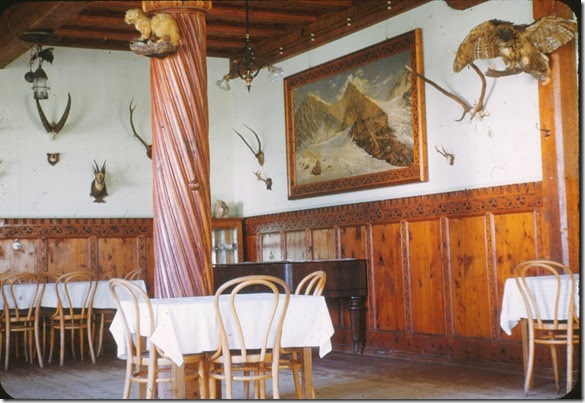
Notice the large oil, shot perhaps because it is of the Mountain. I will find out; I will also keep my fingers crossed that the hotel still has it somewhere.
When dad and mom returned to the Valley in 1950, they drove in our Woodie, which the military has shipped to Munich, as Germany had very few goods of any kind. Anton was a boy, maybe about ten, and has a distinct memory of the legendary airman returning in a mythic car. Here it is:
